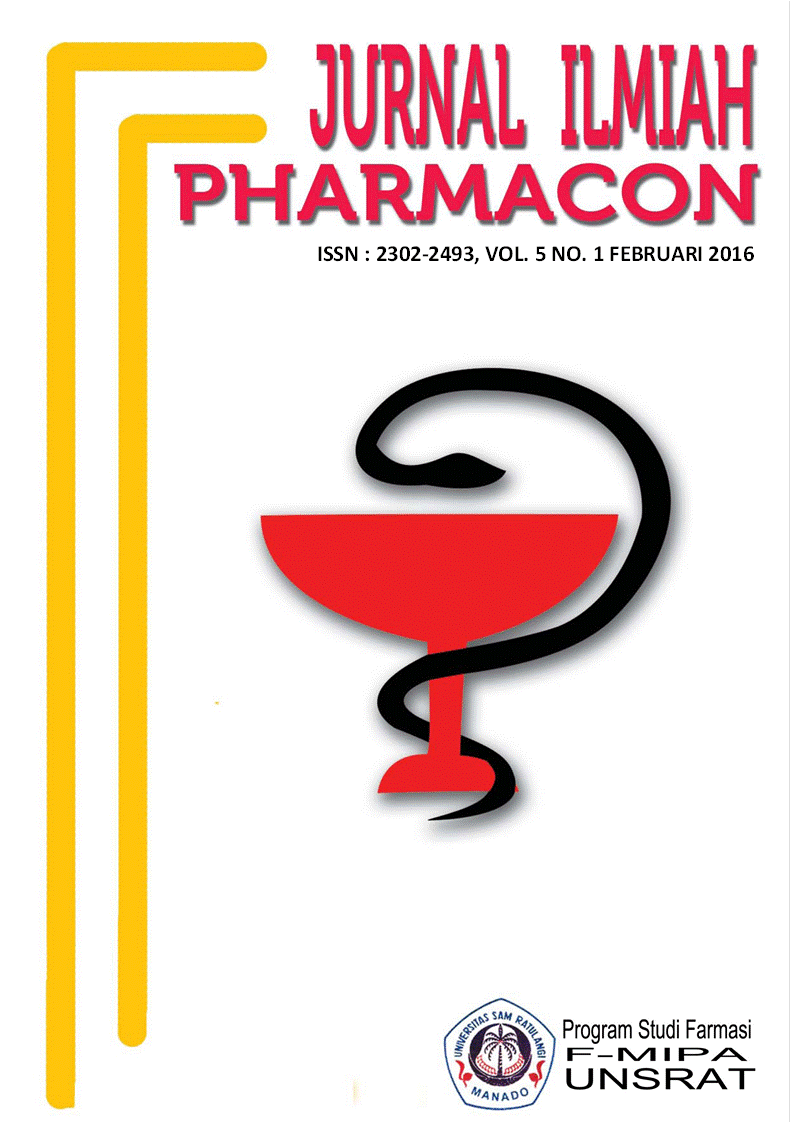PENGARUH JUS PEPAYA (Carica papaya) TERHADAP PERUBAHAN WARNA RESIN KOMPOSIT SECARA IN VITRO
DOI:
https://doi.org/10.35799/pha.5.2016.11218Abstract
PENGARUHÂ JUS PEPAYA (Carica papaya) TERHADAP PERUBAHAN WARNA RESIN KOMPOSIT
SECARAÂ IN VITRO
Deysi R. Genda1), D.H.C Pangemanan1), Michael A. Leman1)
1)Program Studi Kedokteran Gigi Fakultas Kedokteran,Universitas Sam Ratulangi Manado
Â
ABSTRACT
Composite resin is a tooth-colored material that is currently interest in community as a restoration material because it has good aesthetic value and can be used for anterior and posterior teeth. Discoloration of composite resin material remain to be a major problem in long-term clinical study. Discoloration of composite resin can be caused by intrinsic and extrinsic factors. One cause of extrinsic composite resin discoloration is papaya. Purpose of this study is looking for the effect of immersion in juice papaya solution to discoloration of composite resin. This study is an experimental research laboratory with pre and post test only control design. Sample for this study are thirty of composite resi and with diameter 5 mm and height 2 mm. This samples divided into 6 groups there are control aquades groups and the treatment group were soaked in the papaya juice with 3 time duration 5,7,and 10 days. After soaking the measured rate of change of colour with spectrophotometer colourflax. These result were statistically tested by one way anova and LSD.
One way ANOVA Showed the influence of the path of time soaking papaya juice solution to discoloration of composite resin (p<0,05). LSD test results indicate a difference in the color changes a result of immersion in a solution of papaya juice.
Key words: composite resin, discoloration, papaya
ABSTRAK
Resin komposit merupakan material sewarna gigi yang saat ini diminati masyarakat sebagai bahan restorasi karena memiliki nilai estetik yang baik dan dapat digunakan untuk gigi anterior maupun posterior. Perubahan warna pada resin komposit menjadi masalah utama studi klinis dalam jangka waktu yang panjang. Perubahan warna pada resin komposit dapat disebabkan oleh faktor intrinsik dan faktor ekstrinsik. Salah satu penyebab ekstrinsik perubahan warna pada resin komposit adalah buah pepaya.Tujuan dari penelitian ini adalah untuk mengetahui pengaruh perendaman buah pepaya terhadap perubahan warna pada resin komposit. Jenis penelitian ini adalah Pra eksperimental laboratorium dengan desain pre and post test only control group design. Jumlah sampel dalam penelitian ini adalah 30 resin komposit dengan diameter 5 mm dan tebal 2 mm. Sampel dibagi menjadi 6 kelompok, yaitu kelompok kontrol aquades dan kelompok perlakuan yang direndam dalam jus buah pepaya, dengan 3 durasi waktu 5, 7, dan 10 hari. Setelah perendaman diukur nilai perubahan warna dengan spektrofotometer colourflex. Hasil penelitian diuji secara statistik dengan uji Anova satu jalur dan LSD. Hasil uji Anova satu jalur menunjukan adanya pengaruh perendaman pada jus buah pepaya terhadap perubahan warna resin komposit (p<0,05). Hasil uji LSD menunjukan adanya perbedaan perubahan warna akibat perendaman dalam jus buah pepaya.
Â
Kata kunci : resin komposit, Perubahan warna, pepaya
Â
Downloads
Published
How to Cite
Issue
Section
License
Authors who publish with this journal agree to the following terms:
- Authors retain copyright and grant the journal right of first publication with the work simultaneously licensed under a Creative Commons Attribution-NonCommercial 4.0 International License that allows others to share the work with an acknowledgement of the work's authorship and initial publication in this journal.
- Authors are permitted and encouraged to post their work online (e.g., in institutional repositories or on their website) prior to and during the submission process, as it can lead to productive exchanges, as well as earlier and greater citation of published work (See The Effect of Open Access)










